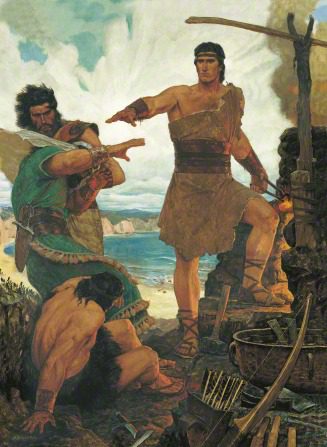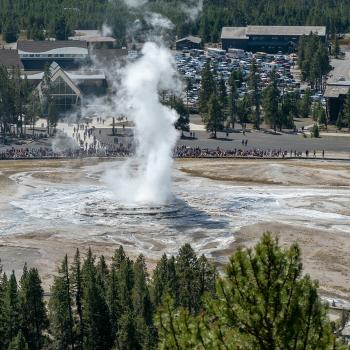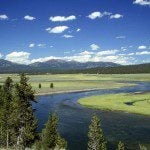
(LDS.org)
Two important principles of scriptural interpretation are clearly stated or implied in today’s reading, 1 Nephi 19:
1.
As plainly shown in 1 Nephi 19:6, Nephi claims no infallibility for himself and no inerrancy for his writing. Nor does the Book of Mormon claim inerrancy for itself. Indeed, quite the contrary: “And now,” says the revealed ancient “Title Page” to the Book of Mormon, “if there are faults they are the mistakes of men; wherefore, condemn not the things of God, that ye may be found spotless at the judgment-seat of Christ.” (See also Ether 12:23-27.)
I see no clear claim of inerrancy anywhere in the scriptures, and can think of no solid theological reason to expect or want such a claim. (Back in 2001, I published an article entitled “Notes on Historicity and Inerrancy” that contains some of my thoughts on the topic.)
2.
The idea of “likening the scriptures to ourselves,” mentioned at 1 Nephi 19:23-24, is fundamental to his approach to Isaiah, and should be one of our main ways of reading, studying, and pondering the scriptures. Important as it is to understand them in their original context and meaning, they weren’t given to us mere for antiquarian curiosity or scholarly analysis.
How do they apply? What counsel can I derive from them? Can I hear the voice of God speaking to me, as I read?
On a separate note, you might enjoy reading Brant Gardner’s “Musings on the Making of Mormon’s Book: 1 Nephi 19:1-21,” on the blog of the Interpreter Foundation:
http://www.mormoninterpreter.com/musings-on-the-making-of-mormons-book-1-nephi-191-21/
Postscript:
I should have posted a link to this article earlier, in connection with Nephi’s obtaining iron ore in Arabia. It helps to show how very plausible the Arabian seacoast is as a location for Lehi’s Old World Bountiful. This was the kind of important work that the old Foundation for Ancient Research and Mormon Studies, or FARMS, sponsored in its heyday.











